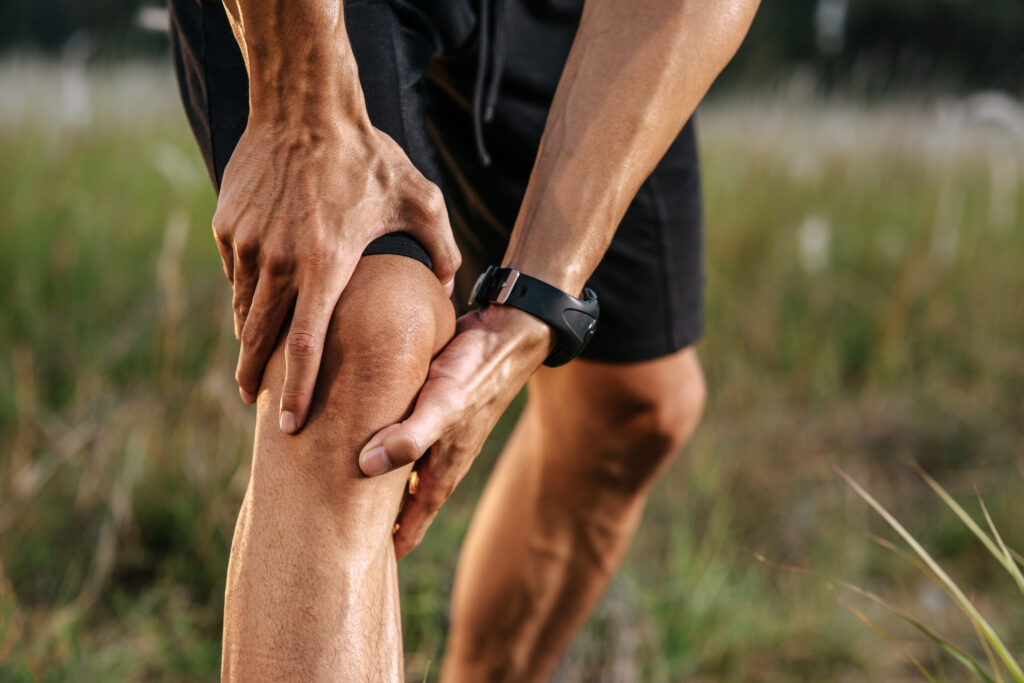When you think about enhancing joint flexibility and movement, you might consider various techniques that can make a significant difference in your routine. Techniques like dynamic stretching, yoga, and foam rolling offer unique benefits that cater to different needs. Each method not only improves flexibility but also supports overall physical health. As you explore these options, you may find that certain approaches resonate more with your body and lifestyle. What if one of these techniques could reveal potential you didn't know existed?
Importance of Joint Flexibility
Many people underestimate the importance of joint flexibility, but it plays a crucial role in overall physical health. When your joints are flexible, you can move more freely, which enhances your ability to perform daily activities without discomfort. Whether you're reaching for something on a high shelf or bending down to tie your shoes, flexibility allows for smoother and more efficient movements.
Incorporating joint flexibility into your routine can also help prevent injuries. Tight joints can lead to strains and sprains, especially during physical activities. By maintaining a good range of motion, you reduce the risk of injury and improve your performance in sports or workouts. You'll find that your body responds better, allowing you to push your limits safely.
Moreover, improved joint flexibility can enhance your posture and alignment. When your joints move well, your body can maintain better alignment, reducing strain on your muscles and ligaments. This can lead to decreased pain and discomfort, particularly in your back and neck, which many people struggle with.
Don't forget that joint flexibility is essential for aging gracefully. As you age, your joints naturally lose some flexibility. By prioritizing flexibility early on, you can maintain mobility and independence later in life.
Dynamic Stretching Techniques
Dynamic stretching is a powerful way to boost your joint flexibility and prepare your body for activity.
These exercises not only enhance your range of motion but also help prevent injuries.
Let's explore the benefits and some effective dynamic stretching techniques you can incorporate into your routine.
Benefits of Dynamic Stretching
Before hitting the gym or starting a workout, incorporating dynamic stretching can greatly enhance your performance. Unlike static stretching, dynamic stretching involves active movements that mimic the exercises you'll perform, which primes your muscles and joints for action.
One of the primary benefits is increased blood flow to your muscles. This boost in circulation not only warms up your body but also increases oxygen delivery, helping you perform better during your workout.
You'll also notice improved range of motion, as dynamic stretches promote flexibility in a functional way. Dynamic stretching can enhance your neuromuscular coordination. By engaging multiple muscle groups, you're training your body to move more efficiently and effectively. This leads to better balance and stability, reducing the risk of injury during high-intensity activities.
Additionally, dynamic stretching activates your central nervous system, preparing your body for the demands of your workout. You'll feel more alert and ready to tackle challenges, whether you're lifting weights or running sprints.
Effective Dynamic Stretching Exercises
Incorporating a few effective dynamic stretching exercises into your warm-up routine can make all the difference in your performance. These movements not only increase blood flow but also enhance your flexibility and range of motion, preparing your body for activity.
Start with leg swings to loosen up your hips. Stand next to a wall for support, swing one leg forward and backward, gradually increasing the range of motion. Aim for 10-15 swings on each leg.
Next, try walking lunges. Step forward into a lunge position, keeping your front knee over your ankle. Alternate legs for about 10 reps on each side.
For your upper body, incorporate arm circles. Extend your arms out to the sides and make small circles, gradually increasing the size for 30 seconds.
Finally, perform torso twists. Stand with feet shoulder-width apart, rotate your upper body from side to side, allowing your arms to follow the movement.
These dynamic stretches will help you perform better and reduce the risk of injury. So, don't skip them—make them a staple in your warm-up routine!
Benefits of Yoga
Yoga offers numerous benefits that can enhance both your physical and mental well-being. Practicing yoga regularly can greatly improve your flexibility, helping your joints move more freely and reducing the risk of injury. As you progress through various postures, you'll stretch tight muscles and strengthen weaker ones, creating a balanced physique that supports better mobility.
Beyond physical advantages, yoga also promotes mental clarity and emotional stability. The combination of breath control and mindful movement encourages you to focus on the present moment. This mindfulness practice can help reduce stress and anxiety, leaving you feeling more centered and calm. You'll likely find that the mental clarity gained through yoga translates into improved concentration in other areas of your life.
Moreover, yoga fosters a deeper connection between your body and mind. This heightened awareness can enhance your overall body awareness, allowing you to understand your movement patterns and make necessary adjustments. The focus on alignment and form in each pose teaches you to listen to your body, promoting better posture and alignment in daily activities.
Additionally, the social aspect of practicing yoga, whether in a class or with friends, can provide motivation and encouragement. Sharing this experience with others helps build a sense of community, which can further boost your mental health.
Myofascial Release Methods
Building on the flexibility benefits gained from yoga, myofascial release methods offer another effective approach to enhance joint mobility and alleviate tension. These techniques focus on releasing tightness and restrictions in your fascia—the connective tissue surrounding muscles. By targeting specific areas, you can improve circulation, reduce pain, and promote better movement patterns.
One popular method involves using your hands or specific tools to apply pressure to tight muscles and trigger points. You'll want to find a comfortable position, then gently roll over the targeted area. This helps to elongate the fascia and release built-up tension. You might feel discomfort at first, but as you persist, the tightness should gradually diminish, leading to increased flexibility.
Another effective strategy is self-myofascial release, where you use props like tennis balls or massage balls. Position the ball on a tight area and lean into it, allowing your body weight to create the necessary pressure. It's a simple yet powerful way to release knots and improve overall mobility.
Remember to breathe deeply throughout the process. This not only helps you relax but also enhances the effectiveness of the release. Aim to spend a few minutes on each area, especially those that feel particularly tight or restricted.
Incorporating myofascial release into your routine can complement your yoga practice, leading to improved joint flexibility and a more relaxed body. You'll likely notice a difference in how you move and feel in everyday activities.
Incorporating Foam Rolling
Foam rolling is a fantastic way to enhance your flexibility and promote recovery. This technique helps release muscle tightness, improve blood circulation, and increase range of motion, making it essential for anyone looking to boost their joint flexibility.
When you use a foam roller, you apply pressure to specific muscle groups, breaking down knots and adhesions in the fascia, which can lead to greater mobility and ease of movement.
To get started, choose a foam roller that suits your needs. A softer roller is great for beginners, while a firmer one may be more effective for those with experience.
Begin by targeting larger muscle groups like your quads, hamstrings, and calves. Roll slowly over each muscle, spending extra time on tight or tender areas. Aim for 1-2 minutes per muscle group, allowing your body to relax and sink into the roller.
Incorporate foam rolling into your routine before and after workouts. Using it as part of your warm-up helps prepare your muscles for exercise, while rolling post-workout aids in recovery.
You'll notice improved flexibility and reduced muscle soreness, making it easier to stay active and engaged in your fitness journey.
Remember to listen to your body. If you feel sharp pain, ease off the pressure or adjust your position.
Consistent use of foam rolling will yield significant benefits over time, enhancing your joint flexibility and overall movement quality. So, grab that foam roller and start rolling your way to better mobility!
Strength Training for Flexibility
Strength training isn't just about building muscle; it can greatly enhance your flexibility as well. When you incorporate strength training into your routine, you're not only developing your muscles but also improving the range of motion in your joints. By focusing on exercises that require a full range of motion, you can increase flexibility while building strength simultaneously.
To leverage strength training for flexibility, consider using compound movements like squats, deadlifts, and overhead presses. These exercises engage multiple muscle groups and encourage your body to move through its natural range.
Don't shy away from incorporating resistance bands and free weights, as these tools allow for more dynamic movements that can enhance flexibility.
It's also essential to balance your strength training with stretching. Dynamic stretches before your workout can help prepare your muscles, while static stretches afterward can promote recovery and further increase your flexibility.
Remember to focus on controlled movements and proper form to avoid injury.
Another effective technique is to integrate exercises that target both strength and flexibility, like yoga or Pilates. These practices emphasize controlled movements and stretching, which can improve your overall flexibility while building strength.
Finally, consistency is key. Regular strength training, combined with stretching, will yield the best results over time.
Lifestyle Habits for Joint Health
Maintaining healthy joints requires a proactive approach to your lifestyle habits. You can markedly enhance your joint health by focusing on a few key areas.
First, prioritize regular physical activity. Engaging in low-impact exercises like swimming, cycling, or yoga keeps your joints flexible and strengthens the muscles surrounding them. Aim for at least 150 minutes of moderate activity each week to promote overall joint function.
Next, pay attention to your diet. Incorporate anti-inflammatory foods rich in omega-3 fatty acids, such as fatty fish, walnuts, and flaxseeds. These can help reduce joint pain and stiffness.
Also, verify you're getting enough vitamins and minerals; calcium and vitamin D are essential for maintaining bone health, while antioxidants from fruits and vegetables can help combat inflammation.
Stay hydrated! Drinking enough water is vital for joint lubrication. Aim for at least eight glasses a day, especially if you're active.
Additionally, managing your weight can alleviate unnecessary pressure on your joints, particularly in weight-bearing areas like the knees and hips.
Finally, listen to your body. If you experience pain or discomfort, don't push through it. Rest and allow your joints to recover.
Incorporating these lifestyle habits won't only enhance your joint health but also improve your overall well-being. By being proactive and consistent, you can maintain joint flexibility and movement for years to come.
Conclusion
Incorporating authentic techniques like dynamic stretching, yoga, and foam rolling into your routine can greatly enhance your joint flexibility and overall movement. By embracing these methods, you not only promote better posture and circulation but also reduce the risk of injury. Remember, staying consistent with strength training and adopting healthy lifestyle habits further supports your joint health. So, make these practices a regular part of your fitness journey, and you'll feel the difference in no time!



